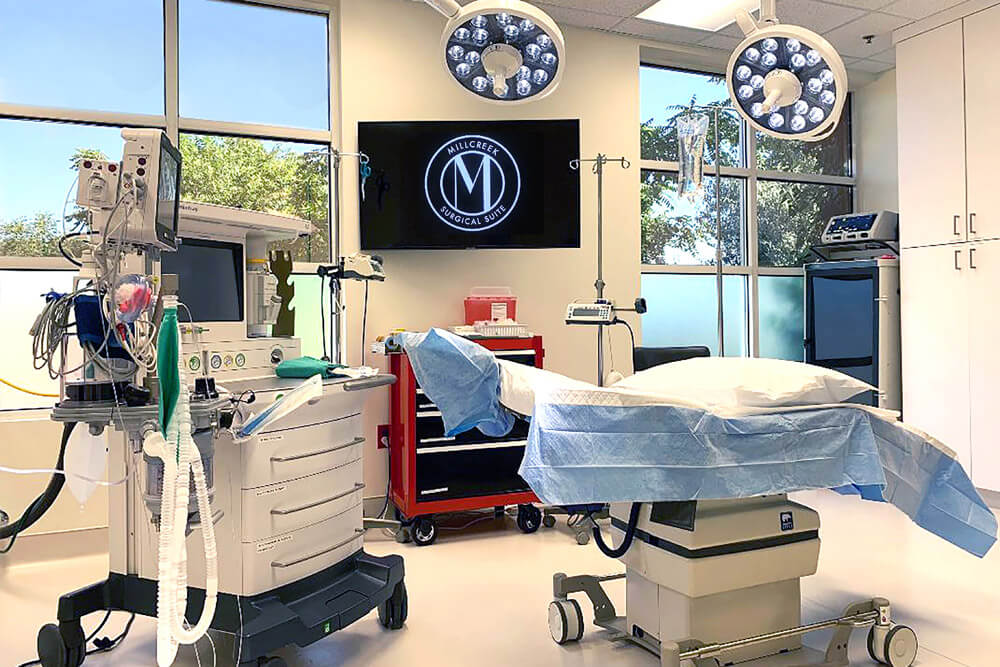MobleyMD is recognized internationally as one of the top Facial Plastic Surgery practices in the US.






FUNCTIONAL SURGERY
Septal Perforation
Surgery
A septal perforation is a hole in the nasal septum. The septum is the vertical “wall" structure that divides the internal nose into the left and right sides. The septum is made up of bone and cartilage and is covered by mucous membranes.
SEE WHY PATIENTS FLY FROM ALL OVER THE US TO EXPERIENCE DR. MOBLEY AND HIS TEAM’S EXPERTISE IN FACIAL PLASTIC SURGERY.
Dr. Mobley is proud to lead the way in establishing Utah as a major destination hub for Facial Plastic Surgery. Whether you’re from out of state or out of country, our Patient Care Team is dedicated to making your experience with us as simple, efficient and discreet as possible.
Nasal Septum Perforation Definition
A septal perforation is a hole in the nasal septum. The septum is the vertical “wall” structure that divides the internal nose into the left and right sides. The septum is made up of bone and cartilage and is covered by mucous membranes.
The most common causes of septal perforation include:
- Previous nasal surgery
- Previous nasal trauma
- Repeated cauterizations of the nose for nose bleeds
- Topical drug use-nasal decongestants sprays as well as recreational nasal drugs
Symptoms of septal perforation:Patients with a septal perforation may have a multitude of symptom all of which can be very annoying and affect not only ones nasal function but overall quality of life. Common symptoms include:
- Difficulty breathing through the nose.
- Constant congestion along with “crusting” around the perforation.
- Recurrent nose bleeds.
- Whistling of the nose.
- A change to the external bridge of the nose often referred to as a saddle nose.
Often small perforations may not even be noticed by patients and may be noticed until a detailed examination of the nose is performed. If the perforation is asymptomatic, meaning that it is not bothering the patient, it is often not necessary to repair it. However, it should probably be monitored periodically by a specialist to ensure that the perforation is not increasing in size over time.
Aren’t sure exactly what type of functional nasal surgery is right for you? Please use Dr. Mobley’s proprietary “Nasal Symptom Checker” to find out if functional nasal surgery from Dr. Mobley may improve your quality of life.
Nasal Septum Perforation Medical Treatment
While there is no medical treatment to close a perforation, there are many things patients can do to ease the symptoms of a perforation. There is an old cliché about nasal septum perforations that “A moist nose is a happy nose”. What this means is that keeping the inside of the nose moist can be a very effective way to medically manage a perforation. If surgery is not the right choice for you, Dr. Mobley can help design a custom “nasal hygiene routine” for you that you can perform daily and or weekly to help greatly minimize the symptoms of your perforation.
Medical Treatment
Medical treatments will never actually straighten a septum but for some patients can provide symptomatic relief. There are many medications available and some time just some trials of different medications will be necessary to determine if medical therapy is right for you. Medications can be used to ease symptoms. Some options include: Decongestants (Sudafed, Mucinex-D), Antihistamines (Allegra, Claritin, Clarinex, Zyrtec, Xyzal), Nasal steroids (Nasonex, Nasacort, Veramyst, Omnaris, Flonase), Nasal Antihistamines (Astepro, Patanase).
If allergies are exacerbating the deviation, then patients may benefit from allergy treatment. Treating allergies will decrease the swelling of the lining of the septum and surrounding tissue. Patients will notice less congestion, but it is important to keep in mind that this will not alter or fix the septal deviation.Medical treatments can be affective in approximately half of patients. However, many of these medications must be taken more or less for life. And a common side effect of these medications is nasal drying which can lead to other problems such as a dry irritated nose and recurring nose bleeds. Utah is one of the driest states in the nation and as such many patients find the daily use of medications just not a practical long-term solution.
Nasal Septum Perforation Surgical Treatment
The first step in deciding to have surgery is to get a better understanding of the likelihood of the operation being succesful in completely closing the perforation. For some patients the perforation may simply be too large to close, and/ or could be located at a spot inside the nose that has a lower likelihood of succesful closure. Dr. Mobley will go over all of this in extreme detail during your consultation.
The surgery to close a septum perforation is one of the most technical operations performed by Dr. Mobley. The mucous membranes must be moved around inside the nose to cover the existing hole in the septum. Mucous membranes are technically tricky tissues to work with as they are thin, fragile and do not always hold surgical sutures as well as other tissue like human skin or muscle.
The mucous membranes are rearranged on the inside of the nose to close the perforation. In most all cases, cartilage and other tissue from behind the ear is also used to complete a successful perforation repair. The operation takes anywhere from 2-3.5 hours and is always performed under general anesthesia.
Recovery Time
Following nasal septum perforation repair soft silastic internal nasal splints will be sewn insude the nose to help the perforation heal optimally. These splints are often left in for 3-4 weeks post operative. For patients that fly in from out of town for their repair it is critical that Dr. Mobley be alllowed to remove your internal splints- as such these patients will need to make plans to return to Salt Lake City 3-4 weeks post-surgery for this important visit.
Many patients may wish to take a few days off from surgery simply to recover from the tired feelings that can follow nasal surgery under general anesthesia. So long as you do not work in a “dirty” environment (construction & mining as easy examples) you should be able to return to work after just a few days of at home recovery. Sometimes an external nasal cast is placed on the outside of the nose and is left on the nose for 4-7 days post-operative.
RELATED PROCEDURES
Other related procedures may include the following:
Before & After Photos
AN OFFICE INSPIRED BY INNOVATION
Experience our state of the art facility in the heart of Utah's Medical Corridor!
Mobley MD Facial Plastic Surgery office was built from the ground up and designed specifically for the patient experience. Our patients have exclusive access to Millcreek Surgical Suite, a AAASF nationally certified center that provides an unparalleled experience for discerning cosmetic patients. Located steps away from Utah’s renowned St. Marks Hospital, our office houses our state of the art surgical facility and our boutique medical spa, BeautyNow.







